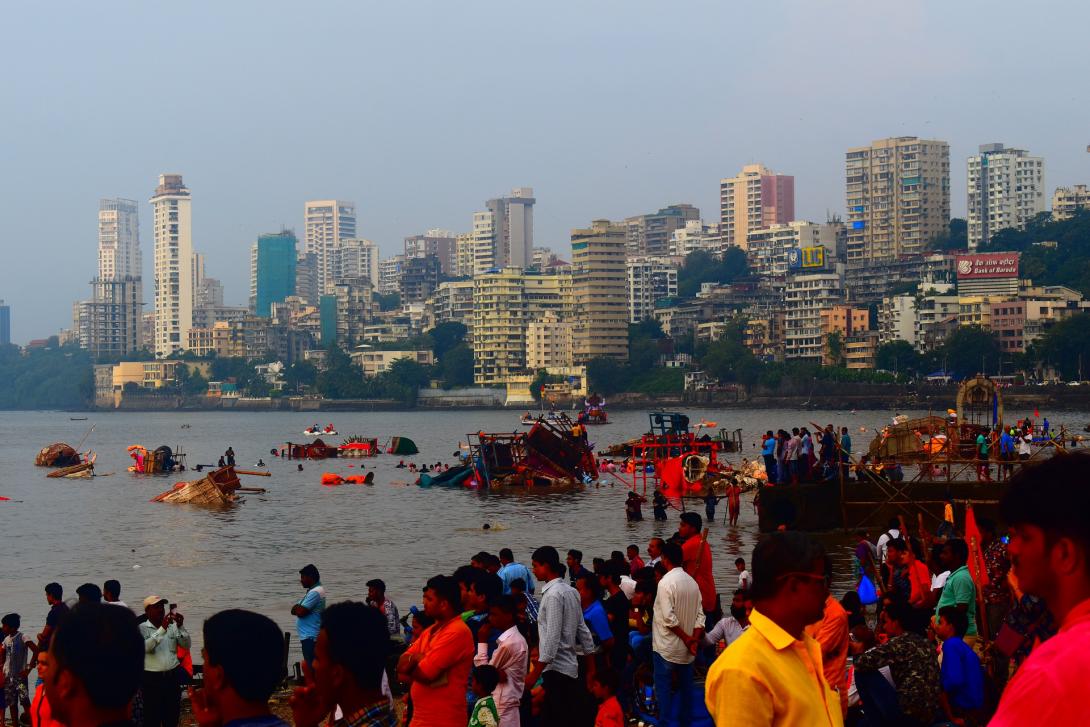
There was overwhelming audience response to the online felicitation held recently in honour of historian Irfan Habib on his 90th birthday. One could not get admission to zoom after the limit of 1000 members had been reached. Many were stranded. But then access was provided through facebook platforms for many others to join.
It was a very high profile panel of speakers including Romila Thapar, who herself has completed 90 and is fitter than some younger scholars, Amiyakumar Bagchi, Aditya Mukherjee and Shireen Moosvi, a colleague of Habib for many years in Aligarh university.
A number of heritage structures, BDD chawls built by the Bombay Development Department a hundred years ago to house workers will be demolished. The vast area will now be redeveloped into a forest of skyscrapers to house the wealthy and the poor original residents will be located in extremely congested dwellings with little space between buildings.
The leftist gathering got almost a CPM party character with Sitaram Yechury positioned conspicuously above all other speakers on the video screen and delivering the opening speech about dictatorship of the proletariat and other issues.
Unfortunately, hardly anyone could understand what veteran Bagchi was saying. Not his fault, he is too old. I think this is basically a terrible communication failure on the part of some of our organiser academics with all the resources at their command. They should have known better about his health.
Distorting history
There was a similar experience with Prof Bagchi at Max Mueller Bhavan in Mumbai a few years ago in a seminar on Marx which I attended. Yesterday’s felicitation was titled a symposium on the theme ‘In defence of history’ which is quite relevant considering the distortion history is being subjected to.
Unfortunately, there is little awareness of the very demolition of working people’s history and heritage that has been going on for some time. In Mumbai, the textile mill areas have been devastated and replaced by swanky high towers with rank bad planning of the areas.
Middle class areas like Shivaji Park are now being ringed by high rises and the middle class does not even realise what a threat this gentrification poses to its own well being.
Now they are going to demolish a number of heritage structures, BDD chawls built by the Bombay Development Department a hundred years ago to house workers. These were sites of Dalit Panther resistance . The vast area will now be redeveloped into a forest of skyscrapers to house the wealthy and the poor original residents will be located in extremely congested dwellings with little space between buildings. This is in contrast to the wide open spaces in the chawls which one would not miss if one goes from Doordarshan Kendra to Worli Naka.
High rise: Harmful or healthy?
Middle class areas like Shivaji Park are now being ringed by high rises and the middle class does not even realise what a threat this gentrification poses to its own well being. This is visible if one stands opposite Shiv Sena Bhavan and the almost empty Kohinoor Square Tower.
Some of the construction work of high rises pose a serious risk to road users as in the narrow Raut road, behind Sena Bhavan and near Raj Thackeray’s residence.
The once tranquil housing colonies of artists, writers, journalists like Kala Nagar, Patrakar and Sahitya Sahawas on the narrow Kalelkar Marg in Bandra east are now uncomfortably squeezed . Sandwiched between the high traffic carrying Bandra Kurla complex road on one side and the monotonous steel and glass of Rustomji Towers which have displaced Middle Income Group (MIG) housing board buildings. Ironically, this area is called Gandhi Nagar. The developments provide another mockery of the Mahatma. Also the wide road with the Rustomji buildings is named after Nanasaheb Dharmadhikari, a religious preacher whose lectures in Raigad district caused massive traffic jams with the traffic they generated. Amidst the very monotonous streetscape here one was pleasantly surprised to find a well designed vegetable stall selling vegetables in wicker baskets and on banana leaves to give a more natural flavour.



